Al Karama Building: Community and Commerce in Dubai
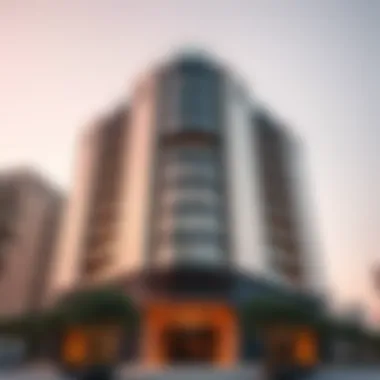
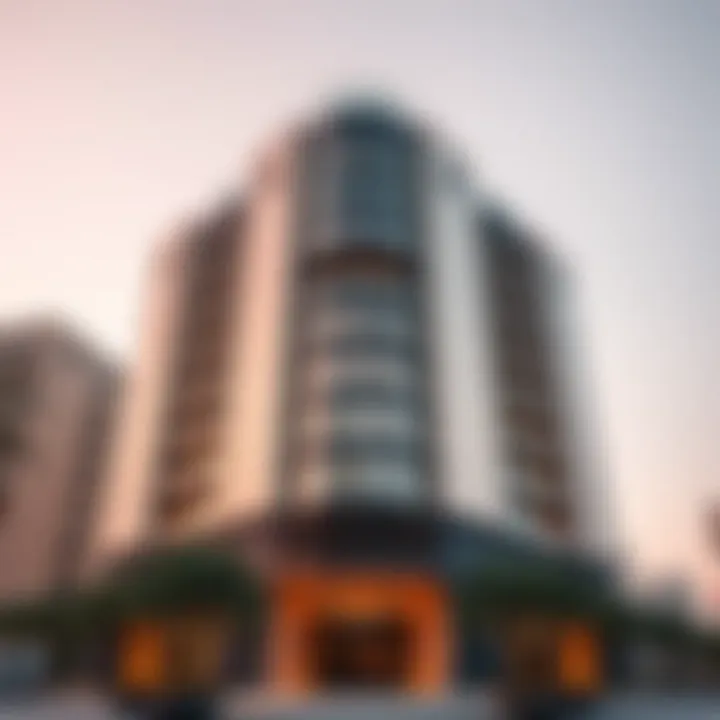
Intro
The Al Karama Building isn't just any structure in the bustling heart of Dubai. It stands as a testament to the city’s rapid development, successful blend of residential and commercial life, and community spirit. Situated in one of the most accessible neighborhoods, this building is more than just bricks and mortar; it's a tapestry of stories, businesses, and homes interwoven through daily interactions. As Dubai evolves, institutions like the Al Karama Building play a pivotal role not just as physical spaces, but as hubs that foster connection and exchange.
As this article unfolds, we will take a closer look at the key characteristics and significance of the Al Karama Building. We will probe into its architectural features, historical importance, and how it resonates with the local community. Additionally, there is an intriguing examination of the socio-economic landscape surrounding this landmark, shining a light on what it truly means for both residents and potential investors.
By diving into these layers, we hope to provide a comprehensive guide that gives clarity and depth into why the Al Karama Building is worth exploring for homebuyers, investors, and any stakeholder in Dubai's ever-evolving real estate market.
Market Analysis
Current Trends in Dubai Real Estate
In the last few years, the Dubai real estate market has been characterized by a dynamic shift influenced by various factors. High demand for properties often crosses paths with a growing expatriate community, shaping trends that are hard to ignore. Al Karama, with its vibrant blend of both commercial and residential spaces, is a prime example of this emerging trend.
Investors are increasingly leaning toward areas like Al Karama, recognizing that its strategic location provides access not just to local amenities but also to major business districts. Proximity to transport links, schools, and healthcare, makes it an attractive spot for families and young professionals alike.
Additionally, the Dubai government’s ongoing efforts to enhance the property market through regulations, and initiatives are showing positive outcomes. This steady growth presents a landscape filled with potential for the discerning investor and thoughtful homebuyer.
Price Dynamics and Forecasts
Real estate prices in Dubai can fluctuate with the winds of change, yet Al Karama has remained relatively stable compared to other regions. The interest in this locality sets the stage for an exciting forecast. Current averages reveal a balance between affordability and luxury, which continues to attract both expats and locals.
When analyzing price trends, it’s clear that properties in Al Karama reflect a broader narrative of growth and stability.
- The average price per square foot currently sits at AED 1,200.
- Historical data indicates a steady increase of about 4-6% annually, which suggests a solid investment opportunity not to be overlooked.
- With various developments in the pipeline, including infrastructure enhancements and new business openings, it's plausible that prices could see further appreciation in the coming years.
"Investing in Al Karama represents a unique balance between immediate community benefits and long-term growth potential."
Investment Opportunities
Insights on High-Return Investments
Investors looking for high-return opportunities might find Al Karama particularly appealing. The influx of businesses catered to the local community generates foot traffic that bolsters the potential for retail spaces within the building.
Additionally, residential units are becoming increasingly attractive to renters, particularly young professionals who are keen to be in close proximity to work and leisure activities. This demand indicates that purchasing property in Al Karama can yield promising rental returns.
Emerging Neighborhoods for Expatriates
Al Karama, while not new, remains a sought-after neighborhood for expatriates due to its multicultural atmosphere and community feel. As the area keeps developing, the blend of diverse cultures creates a unique setting, perfect for individuals and families.
Furthermore, neighborhoods such as Al Jafiliya and Bur Dubai nearby add to the area’s allure by offering additional amenities, schools, and varied lifestyle options, further enriching the experience for those who choose to reside here. This connectivity to other neighborhoods enhances the community fabric that is so vital in building lasting ties.
In summary, understanding the Al Karama Building allows for a glimpse into a rapidly developing nexus that stands as a model of community, commerce, and investment potential in Dubai's thriving landscape.
Prelude to the Al Karama Building
Understanding the Al Karama Building is essential for grasping the intricate balance of life in Dubai. Located in the heart of Dubai, this edifice is not just a structure; it's a living testament to the merged destinies of commerce and community. As a cornerstone of the bustling Karama district, it stands out as a focal point where commercial activity thrives amid a residential backdrop. This dual functionality attracts a diverse crowd from both local residents and visitors, creating a unique tapestry of daily interactions.
Overview of Its Significance
The significance of the Al Karama Building stretches beyond its physical presence. This establishment serves various functions, which offer benefits to residents, investors, and the broader community. It's a melting pot of experiences, enabling people to connect, shop, and engage. As you walk through the various shops and eateries, the atmosphere is charged with a vibrant energy that reflects Dubai’s dynamic spirit.
"The Al Karama Building is the heartbeat of the Karama district, where businesses flourish and community bonds strengthen."
The layout of the building encourages foot traffic, enhancing local businesses' visibility. For homebuyers and investors, proximity to such a vibrant commercial hub naturally increases property values. Moreover, this building emphasizes the importance of local culture, as many businesses resonate with the tastes and preferences of the neighborhood.
This establishment represents an investment opportunity as well, particularly for those interested in a diverse and evolving real estate market. It’s not merely about purchasing property; it's about tapping into a lifestyle that blends convenience and cultural richness.
In summary, understanding the Al Karama Building is key to appreciating Dubai's overall growth and community engagement. Its significance lies not just in its architectural design but in the life it supports and the opportunities it presents for both individuals and businesses.
Architectural Design and Layout
The architectural design and layout of the Al Karama Building plays a crucial role in not just its appeal, but also its functionality within the bustling context of Dubai. This structure harmoniously combines aesthetic beauty with practical utility, catering to both residents and businesses that operate within its walls. The careful consideration of design elements serves to enhance the community’s experience, ensuring that the building is more than just a set of walls and windows.
Exterior Features
The exterior of the Al Karama Building is striking and thoughtfully designed. Faced with modern materials and sleek lines, it stands out against the backdrop of Dubai’s urban landscape. The façade features large glass panels that allow for natural light to pour in, creating a bright and inviting atmosphere. This approach not only emphasizes transparency but also aligns with contemporary sustainable design principles.
The entrance is notably welcoming, framed by green landscaping that softens the building's architectural lines.
Some key elements of the exterior include:
- Canopy overhangs: These provide shade and add to the aesthetic appeal, making the outdoor experience comfortable.
- Harmonizing color palette: The use of earth tones brings balance and warmth.
- Balconies: These provide residents with private outdoor space, enhancing both livability and the overall visual appeal.
"A building's exterior reflects its personality; the Al Karama Building emanates a sense of community and class through its design."
Interior Spaces
Once inside, it becomes clear that the intent behind the design is to foster community interaction as well as individual comfort. Open-layout concepts dominate the design, allowing spaces to flow freely into one another. This openness provides flexibility for various uses, whether it be retail or living spaces.
Key features of the interior layout include:
- Community areas: Designed for social interaction, these spaces serve as venues for activities and events, enhancing the communal feel of the building.
- Natural light optimization: Interior walls and open spaces are strategically placed to allow light to filter through the building, contributing to a cheerful ambience.
- Versatile spaces: Capacities to rearrange spaces for different businesses showcases the adaptability of the design to meet diverse tenant needs.
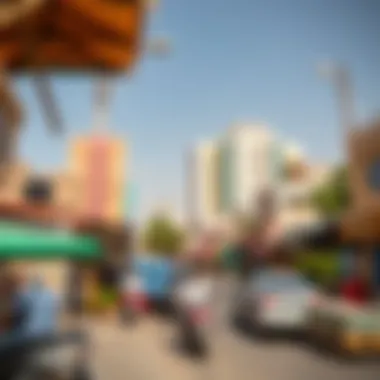
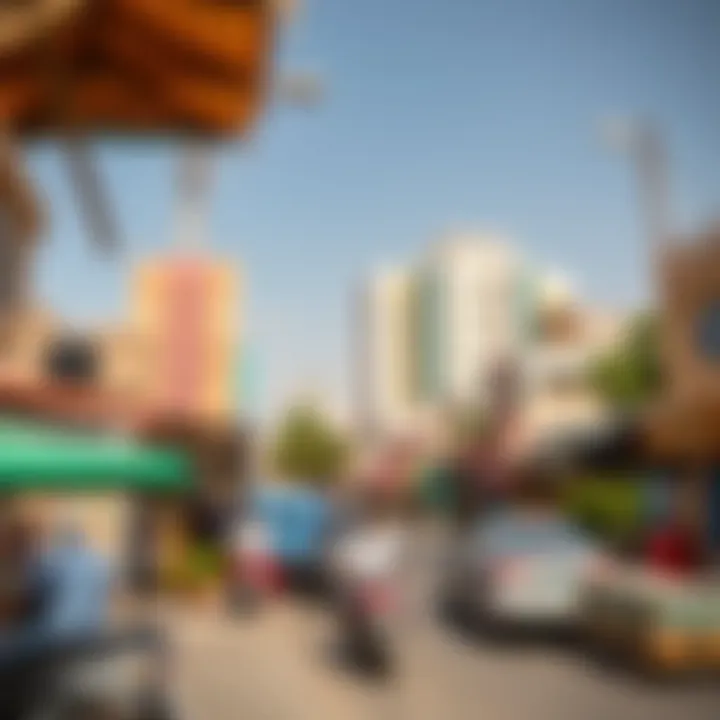
The Al Karama Building exemplifies how considered architectural design can create a multifaceted environment that serves not just as a physical space, but as a catalyst for community connection and commercial activity. Through blending well-planned interior and exterior designs, it stands as a model for future developments within Dubai's ever-evolving skyline.
Historical Context
Understanding the historical context of the Al Karama Building is crucial to appreciating its enduring significance in Dubai. This structure stands not just as an architectural feat but as a testament to the changing urban landscape of the city. With its roots tracing back to the early development of Dubai, Al Karama has always been a thread in the fabric of the community it serves.
From the 1970s onwards, as Dubai began to carve a name for itself on the global stage, the Al Karama area transitioned from a smaller, more modest neighborhood into a lively hub that embodies the essence of community life. The rise of the expat population during this period further catalyzed the need for both residential and commercial spaces, paving the way for such iconic structures. This building not only provided much-needed accommodation but also fostered an atmosphere that welcomed businesses to thrive alongside residential dwellings.
Early Development
The early development of the Al Karama Building coincided with Dubai's rapid economic transformation. Initially envisioned as a mixed-use structure, its design sought to maximize utility while reflecting local tastes and needs. The planners aimed to create a space that resonated with the cultural diversity present in the surrounding areas.
"Al Karama represents a shining example of how urban planning can create unity in diversity."
In its early days, various small businesses established themselves within the building, from grocery stores to cafés, attracting a mix of locals and expatriates. As the years rolled on, the Al Karama Building started to bloom into a community center, becoming a venue for cultural exchange and social gathering. The echoes of bustling markets filled the air, as families visited to buy produce or simply enjoy the vibrant community life.
This phase of early development laid the groundwork for what Al Karama is today—a vital meeting point for commerce and community interactions among different cultural backgrounds. The dynamic environment fostered by its commercial spaces continues to evolve, attracting new businesses and contributing to the economic fabric of Dubai. Key historical milestones indicate that Al Karama's growth reflects the resilience and adaptability of a city that is in constant motion.
Community Impact of the Building
The Al Karama Building holds a significant role in Dubai, not only as a physical structure but as a catalyst for community development. With its prime location serving as a confluence of residential and commercial activities, the building impacts various facets of daily life in the neighborhood.
Through its design and function, the Al Karama Building fosters a sense of togetherness and camaraderie among residents and visitors. Local gatherings and civic activities find a home within its walls, encouraging engagement and interaction among diverse groups. Moreover, the community benefits in multiple ways, from access to essential services to opportunities for socialization.
The importance of a facility like the Al Karama Building cannot be overstated:
- It serves as a hub for local businesses, fueling economic growth and providing jobs.
- Various community events occur here, focusing on cultural exchange and collaboration, strengthening social bonds.
- The layout encourages inclusive designs, making it accessible to families, professionals, and tourists alike.
In essence, the building’s contribution to community life can be summed up in its ability to promote a lively and interactive atmosphere. As we delve deeper, one can see how vital civic activities and engagement are detailed below.
Civic Activities and Engagement
Community engagement at the Al Karama Building manifests in several ways. Regular events such as markets, workshops, and festivals are organized, showcasing local talents and small businesses. This not only supports the local economy but also allows residents to build connections.
A noteworthy aspect of civic activities here is the inclusivity. Initiatives are often designed to engage various demographics, ensuring that everyone feels welcomed. For example:
- Cultural Festivals: These events celebrate the rich heritage of Dubai, bringing together diverse cultures. They often feature music, art, and food reflecting the community's diversity.
- Health Camps: Regular health check-up camps are organized in collaboration with local health services, ensuring that residents have access to medical care without travelling far.
- Workshops and Seminars: Often focusing on skills development, these workshops empower residents by enhancing their knowledge in areas like entrepreneurship, technology, and personal finance.
"The community here is not just living side by side; it thrives together. The Al Karama Building is where connections are formed, ideas exchanged, and growth nurtured."
Efforts to welcome local participation are visible in every nook of the building. Feedback from residents often highlights a sense of belonging, pride, and collective responsibility for their neighborhood. Engaging local voices holds a mirror to the building's community impact.
In summary, the Al Karama Building is not just a brick-and-mortar establishment but a vibrant canvas where civic activities take center stage. It plays a pivotal role in nurturing community relationships, fostering engagement, and enhancing the overall quality of life within the neighborhood.
Commercial Viability
Exploring the commercial viability of the Al Karama Building allows us to grasp its significance in Dubai's ever-flourishing economic landscape. Situated right in the heart of a bustling neighborhood, this structure stands out not only for its aesthetic charm but also for the multitude of opportunities it presents to retailers and business owners alike. Having both residential and commercial spaces, the building is tailored to attract a diverse range of investors and homebuyers.
Retail Opportunities
The Al Karama Building offers a smorgasbord of retail spaces that cater to different customer needs. Local and international brands have found a superb platform here, drawn by the building’s foot traffic and its proximity to residential communities. This dynamic creates a melting pot for commerce, where small shops rub shoulders with larger franchises.
- Diverse Product Offerings: The retail outlets range from boutique clothing stores to specialty food markets, providing something for everyone's taste.
- Strategic Location: Being situated near major transport links means that both residents and visitors can easily access the shops, enhancing customer flow.
- Community Engagement: Retailers often hold events or promotions that foster community spirit. For example, local artisans might pop-up to showcase their craft, bringing a unique charm to the shopping experience.
This blend makes the Al Karama Building a prime spot for retail endeavors. The synergy between different types of businesses positively impacts their performance, drawing in a constant stream of customers.
Business Dynamics
The business environment within the Al Karama Building is vibrant and diverse, reflecting the broader economic fabric of Dubai. Here, entrepreneurs can find the right mix of competition and collaboration.
- Cost-Effectiveness: Compared to more glamorous areas like Downtown Dubai, Al Karama offers more affordable leasing options. This attracts newcomers looking to make their mark in a less saturated market.
- Networking Opportunities: Local businesses can thrive through communal support, creating a network where sharing information and resources is common. Networking events and workshops often pop up, helping businesses to connect and grow together.
- Adapting to Trends: As trends shift, businesses in the building demonstrate a quick adaptability. For instance, during events like the Dubai Shopping Festival, retailers often tailor their offerings to meet changing consumer preferences, like exclusive deals or limited-edition products.
Businesses at Al Karama are not just reactive; they are forward-thinking, planning ahead to seize emerging market opportunities.
The success of the Al Karama Building isn't merely by chance; it's a multiplier effect of community engagement, business collaboration, and attractive retail spaces that stand to gain from the pulse of the neighborhood.
In summary, the commercial viability of the Al Karama Building is influenced by its diverse retail opportunities and dynamic business environment. This makes it a beacon for investors and entrepreneurs aiming to capitalize on Dubai's exponential growth. By breaking down these elements, we see just how central Al Karama is within the commercial currents of the city.
Investment Potential
The investment potential of the Al Karama Building is a subject of great interest, considering its strategic position as a focal point of community life and commerce in Dubai. This hub not only presents various opportunities for investors but also signifies a broader trend in the real estate market where mixed-use developments are becoming increasingly sought after. Emphasizing the building's dual residential and commercial nature, it becomes clear that Al Karama is more than just a physical structure; it embodies an ecosystem where living, working, and leisure coexist seamlessly.
Real Estate Market Trends
Analyzing the current real estate market trends in Dubai, Al Karama stands out as a promising location. Recent developments indicate rising demand for properties that serve multiple purposes. For instance, the increasing influx of expatriates looking for affordable living options in a comfortable environment is noteworthy. Additionally, the local government is investing heavily in infrastructure, further catalyzing the property market.
Key trends include:
- Rising rental yields: Properties in Al Karama showcase healthy rental returns, proving attractive to investors seeking steady cash flow.
- Increasing buyer interest: The appeal of Al Karama is amplified by its proximity to essential amenities and cultural hotspots, making it a preferred choice among families and young professionals.
- Sustainability initiatives: Moving towards greener buildings aligns with global trends, appealing to environmentally-conscious investors.
These trends suggest that the Al Karama Building is well-positioned to leverage both the socio-economic dynamics of Dubai and the shifting preferences of modern tenants and buyers.
Price Analysis
Understanding the pricing structure surrounding properties in the Al Karama Building is crucial for potential investors. Prices are often influenced by various factors, including location, property features, and current market conditions. A comprehensive analysis reveals:
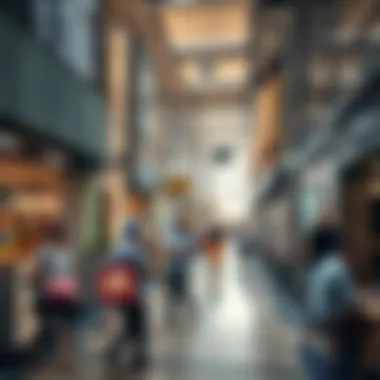
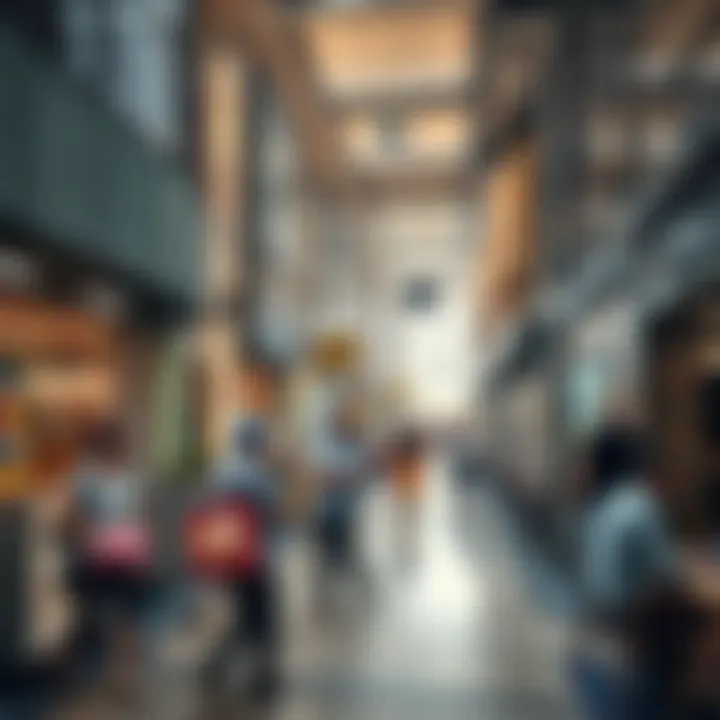
- Price per square foot: Compared to other neighborhoods in Dubai, Al Karama offers a competitive price per square foot, which attracts budget-conscious buyers.
- Historical price trends: Over the past few years, property prices in Al Karama have shown a steady upward trajectory, signaling potential for capital appreciation.
- Investment returns: Investors can anticipate favorable returns as the demand continues to rise in the area, ensuring that rental income remains robust.
"Real estate is not just about location—it's about the intrinsic value each property brings to its community."
Overall, the understanding of rental yields and property pricing serves as a roadmap for potential investors looking at Al Karama as their next endeavor. The amalgamation of community-oriented living with commercial viability presents a unique investment opportunity in a dynamic Dubai market.
Challenges and Resilience
Exploring the dynamics surrounding the Al Karama Building involves recognizing the hurdles it faces alongside the resilient nature of its community. As with any community hub, Al Karama is not immune to ebbs and flows caused by market conditions, social changes, and urban development. Understanding these factors is crucial for anyone looking to engage with or invest in this vibrant part of Dubai.
Market Fluctuations
In the fast-paced environment of Dubai, market fluctuations can swing like a pendulum. Real estate values in the Al Karama area have seen ups and downs over the years, influenced by broader economic indicators. For instance, during a global economic slowdown, there might be a noticeable dip in property prices; however, the resilience of Al Karama often allows these values to rebound as demand returns.
- Economic Dependency: The area's economy heavily leans on local businesses and tourism. If visitors choose other locations as their preferred spots, it can impact foot traffic, leading to reduced sales for retail shops. This, in turn, affects property rentals and values.
- Development Projects: Newly launched development projects in nearby areas can either spike interest in Al Karama or draw potential buyers and renters away. For any investor, understanding how shifting trends can impact both the value of residential and commercial properties is essential.
To provide a deeper perspective, research from reputable sources like Wikipedia reveals that economic trends across the UAE can create ripple effects, influencing not just Al Karama but many neighborhoods.
Community Feedback
One of the cornerstones of Al Karama's resilience is the voice of its community. Regular feedback from residents and business owners plays a vital role in shaping the future of the neighborhood. When the community comes together to address challenges, it can foster a stronger bond and improve conditions on the ground.
- Constructive Engagement: Forums and local meetups facilitate discussions where ideas for improvement are exchanged, creating a vibrant civic culture. Residents often voice concerns over traffic, safety, or infrastructure, every bit of which contributes to their collective identity.
- Actionable Insights: Local councils often take feedback to enact changes swiftly, whether it involves enhancing public facilities or promoting cleanliness. This collaboration fosters trust and a sense of belonging which is essential for any community's vitality.
“The power of a community lies in its ability to adapt and respond to the challenges it faces.”
In summary, recognizing the challenges that Al Karama faces from market fluctuations and acknowledging the resilience stemming from community feedback becomes critical. Both factors drive the ongoing evolution of this vibrant hub, showcasing how a blend of awareness and action can sculpt a better neighborhood for businesses and residents alike.
Legal Considerations
Understanding the legal framework around the Al Karama Building is critical for anyone looking to invest, reside, or even start a business there. The legal aspects can make the difference between a smooth transaction and a nightmarish experience. It’s not just about the laws on paper; it’s about how these laws affect daily life and long-term investments in this vibrant hub. In this section, we will delve into zoning laws and property rights, offering a comprehensive perspective on what stakeholders must keep in mind.
Zoning Laws
When we talk about zoning laws, we’re referencing the regulations that dictate how land can be utilized and what types of buildings can exist in specific areas. Al Karama’s zoning laws primarily classify it as a mixed-use area, which means residential and commercial activities can coexist. This setup is crucial for potential investors because it promotes a synergistic relationship between businesses and residents.
Here are some key takeaways concerning zoning laws in Al Karama:
- Mixed-Use Benefits: The ability to run a business while residing nearby makes Al Karama attractive.
- Future Developments: Zoning laws can indicate opportunities for future developments or expansions. Investors should keep an eye on any changes that may facilitate or restrict new projects.
- Community Guidelines: These laws also often include restrictions on the types of signage and the overall aesthetic of buildings, which helps maintain the character of the neighborhood.
Understanding these elements can pave the way for smarter investment choices and collaborations that align with the overarching goals of the community.
Property Rights
Property rights in Al Karama are an essential part of its appeal, especially for foreign investors keen on entering the Dubai real estate market. It comes down to ownership structures, accountability, and that nagging question of who gets what.
Some important aspects of property rights include:
- Freehold vs Leasehold: Investors should be aware of the difference. Freehold properties offer full ownership, while leasehold means a limited-term rental agreement. This distinction is crucial when you consider long-term investment.
- Title Deeds: Obtaining clear title deeds is vital. These documents not only confirm ownership but also clarify the property’s status concerning zoning laws.
- Legal Protections: The legal structures in place protect the interests of property owners, providing avenues for recourse should disputes arise.
- Compliance: It’s also worth noting that adherence to property rights ensures that all developments conform to local regulations, which in turn benefits the community as a whole.
Understanding property rights allows buyers and investors to navigate the Al Karama real estate market more comfortably, ultimately leading to informed decision-making and successfully building both personal wealth and community value.
"Navigating the legal landscape of property ownership is as crucial as understanding the property itself."
Those considering a venture in Al Karama should consult local legal expertise to ensure compliance and to grasp the nuances that might affect their interests. For additional information, resources like Dubai's Land Department can provide insights and guidance.
Neighborhood Dynamics
Understanding the neighborhood dynamics surrounding the Al Karama Building is crucial for grasping the myriad ways it shapes community life and commerce in Dubai. A locality is much like a tapestry, where each thread interweaves to create a rich, vibrant picture. In this case, the Al Karama area ties together various cultural, social, and commercial threads which contribute to its appeal.
It's important to note that this building sits not just in any run-of-the-mill neighborhood; it's in a space that acts as both a meeting point and a transition zone between diverse communities. The Al Karama Building has evolved to become a beacon of connectivity and exchange, drawing people from all walks of life, be it locals or expats. This diversity fosters a sense of belonging and promotes interactions among the residents that might not occur in a more homogenous environment.
Cultural Aspects
The cultural landscape of Al Karama reflects the melting pot that is modern Dubai. From the bustling markets to the mouthwatering aromas wafting through the food stalls, this neighborhood shouts vibrancy and life. Its demographics serve a diverse population, with residents showcasing a mix of cultures, languages, and traditions.
Art is sprinkled throughout, with murals and pieces that tell stories both of the UAE's rich heritage and of contemporary global influences. Participating in local events—be it a cultural festival or an art fair—gives people a chance to share their heritage and learn about others. This platform encourages social cohesion and a greater understanding among residents, nurturing empathy and shared values. High-quality cultural experiences not only enrich the life of the community but also enhance the attractiveness of the area for potential investors.
Demographic Insights
Diving deeper into demographics reveals fascinating insights about Al Karama’s population structure. The area is home to a mix of families, young professionals, and retirees, making it a versatile base for various lifestyles. Key aspects worth noting include:
- Age Distribution: Al Karama has a youthful demographic, with a significant chunk of its residents being between the ages of 25 and 40. This influences the types of businesses that thrive here, as cafes and fitness centers catering to younger clients proliferate.
- Ethnic Composition: Reflecting the multicultural fabric of Dubai, residents hail from several countries including India, Pakistan, the Philippines, and more. This diversification enriches residential life as well as commercial activity.
- Economic Status: While the area accommodates a wide range of income levels, it features affordable housing options, making it attractive for middle-class families wanting a slice of urban living without breaking the bank.
Understanding these dynamics is essential for any potential buyer or investor. Knowing who lives and shops in the area can directly influence business strategies and community engagements, ensuring that local offerings align with residents’ needs and expectations.
"The Al Karama Building stands at the confluence of cultures, acting like a microcosm of Dubai’s broader societal fabric."
In sum, the neighborhood dynamics around the Al Karama Building not only enhance social interactions and cultural exchanges but also provide significant insights into the market for investors and businesses looking to establish themselves within a community that thrives on diversity and connectivity.
Future Developments
The section on future developments within the Al Karama Building encapsulates the ongoing evolution and adaptability of this notable structure. It emphasizes the necessity to align upgrade strategies with the needs and expectations of residents, businesses, and investors alike. Moreover, the significance of these developments is multifaceted—spanning economic, social, and environmental dimensions. The unfolding plans not only gear towards improving functional spaces but also address broader community concerns, ensuring that Al Karama remains a vital cog in Dubai's urban machinery.
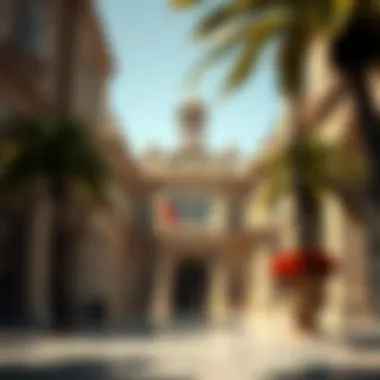
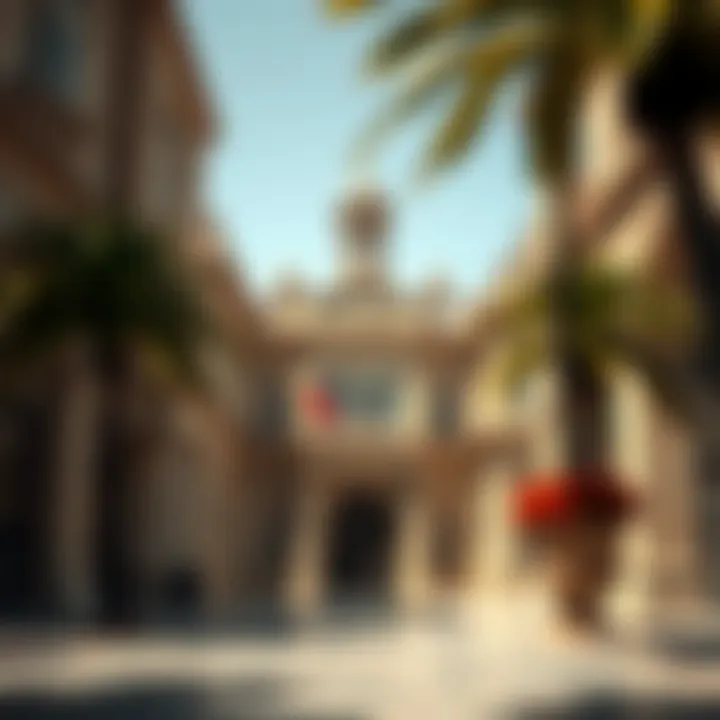
Proposed Modifications
In looking ahead, a number of proposed modifications to the Al Karama Building signal a commitment to modernization. Enhancements might include:
- Sustainable design features: Integrating environmentally friendly technology, such as solar panels and rainwater harvesting systems, to reduce the building's carbon footprint.
- Smart technology installation: Upgrading current systems with IoT capabilities to offer smarter amenities that enhance both security and efficiency for tenants and business owners.
- Redesign of public spaces: Alterations may encompass the creation of communal areas that foster social interactions, such as landscaped terraces or outdoor cafés.
Such modifications aim not only to retain existing stakeholders but also to attract new ones. They cater to an increasingly environmentally conscious clientele looking for properties that offer modern conveniences and sustainability.
Long-Term Vision
The long-term vision for the Al Karama Building extends beyond its walls and encompasses the larger neighborhood dynamic. Planners are looking towards:
- Community Integration: To ensure that developments align with local culture and heritage, attracting a diverse crowd while maintaining the essence of the area.
- Economic Resilience: Strategies that bolster the building's commercial viability amidst market fluctuations and evolving consumer preferences. Staying ahead by attracting businesses that cater to trends, such as remote working needs, will be paramount.
- Transportation Enhancement: Expect developments that include improving access routes and transport connections, facilitating ease of accessibility for both residents and visitors.
The overarching goal is to solidify Al Karama's status as a premier hub that balances modern living with a strong sense of community.
In essence, these future developments are not just about enhancing a building; they represent a holistic approach to community building, economic stability, and sustainability.
Comparative Analysis
In the ever-evolving landscape of Dubai's real estate market, comparative analysis serves as a crucial tool for understanding the Al Karama Building’s position among its contemporaries. This practice not only highlights the building’s distinguishing features but also sheds light on its competitive edge in the diverse fabric of commerce and community that defines Dubai. An effective comparative analysis allows potential homebuyers, investors, and real estate agents to appreciate the Al Karama Building’s unique offerings in relation to other structures in the city, enhancing the decision-making process.
The significance of this comparative lens can be distilled into a few key elements:
- Understanding Market Positioning: By comparing the Al Karama Building with similar properties, stakeholders gain insight into its value proposition and market standing. Knowing how it fares against others can highlight its strengths and vulnerabilities.
- Identifying Investment Opportunities: For investors, comparative metrics might unveil potential returns or risks based on historical performance, occupancy rates, and rental yields. An analysis can help pinpoint whether Al Karama presents a golden opportunity or potentially overlooks larger trends affecting similar structures.
- Highlighting Features and Amenities: Each building comes with a story, and comparative analysis allows for the distillation of what makes Al Karama special. While proximity to key amenities is vital, features such as sustainable architectural designs or community-oriented spaces play a critical role in drawing inhabitants.
- Consumer Preferences and Market Trends: Understanding shifts in consumer preference within the locality helps gauge whether Al Karama aligns with current and emerging trends, such as eco-friendly living or mixed-use spaces.
Benchmarking Against Other Structures
When we dive into benchmarking the Al Karama Building against other prominent structures in Dubai, a clearer picture of its architecture, functionality, and community impact emerges.
For instance, structures like The Dubai Mall and Burj Khalifa predominantly showcase luxury and tourist-oriented features. In contrast, Al Karama emphasizes local engagement and everyday commercial vitality. This building is not just a place to shop or live; it's a hub where diverse communities intermingle and thrive.
Other noteworthy buildings might include the Dubai Marina residences and the mixed-use spaces in Business Bay. While these may focus on high-end clientele and scenic waterfront living, Al Karama's accessibility to various social classes and its affordability serve an entirely different purpose. This is crucial, especially in a city where economic diversity mirrors its physical one.
Benchmarking offers a multifaceted view:
- Performance Metrics: Looking at rental prices, occupancy rates, and sales growth compared to other buildings paints a vivid picture of viability.
- Community Engagement: The immediacy to local markets, schools, and health facilities positions Al Karama favorably when benchmarked against more isolated luxury developments.
- Architectural Integrity: The structural design of Al Karama incorporates a local flavor that respects the culture while introducing modernity. Comparing its architectural elements with those of glass-and-steel giants reveals a deliberate choice of character and cultural harmony.
In summary, conducting a comparative analysis of the Al Karama Building reveals how it not only fits within the skyline of Dubai but also resonates with the community��’s soul, offering a unique blend of practicality and vibrancy that appeals to investors, residents, and visitors alike. By understanding where it stands in relation to its peers, one can appreciate its full value beyond just bricks and mortar.
Sustainability Efforts
Sustainability is no longer just a buzzword; it has transformed into a pivotal aspect of urban development. In the context of the Al Karama Building, embracing sustainable practices stands out as not only a trend but a necessity. The significance of sustainability here stretches far beyond what meets the eye. It involves a commitment to creating spaces that serve the community, preserve the environment, and ensure economic viability for generations to come.
Incorporating sustainable design principles enhances the resilience of the Al Karama Building. This approach not only fosters a healthier environment but also attracts conscientious investors and residents who prioritize green living. The shift toward sustainable development is central in managing resources efficiently, reducing waste, and minimizing the carbon footprint. Furthermore, it encourages responsible consumption among businesses renting or owning spaces within the building, making sustainability a shared commitment.
Moreover, weaving sustainability into the fabric of the Al Karama Building can lead to longer-term cost savings. By utilizing energy-efficient systems, such as LED lighting and high-efficiency HVAC units, operational expenses drop significantly. This economic benefit acts as a magnet for new businesses, enhancing the overall commercial viability of the area. An investment in sustainability is also an investment in community well-being, as it often translates to improved air quality and better living conditions.
Green Initiatives
When it comes to the green initiatives in Al Karama Building, they are as diverse as they are effective. From rainwater harvesting systems to energy-efficient insulation, every detail has a purpose. The building has taken significant strides in implementing the following green initiatives:
- Solar Panels: They harness solar energy, reducing reliance on non-renewable resources. This technology is slowly becoming the solar backbone, providing power during peak hours.
- Vertical Gardens: These not only beautify the building but also improve air quality. Plants filter pollutants, creating a cleaner atmosphere for those working and living in the building.
- Recycling Programs: Al Karama promotes recycling within its tenants and residents. Bins are readily available, encouraging everyone to participate in sustainable practices.
- Community Workshops: Regular events are held to educate residents and business owners on sustainability. These workshops foster a culture of awareness and action.
Implementing these initiatives enhances the building's appeal as a sustainable choice for homebuyers and investors alike.
In summary, the Al Karama Building stands as a model for sustainability in urban developments. Its various green initiatives not only mitigate environmental impacts but also strengthen community ties and offer appealing investment potential. As the world leans toward a greener future, structures like the Al Karama Building are setting the standard, paving the way for others to follow.
Visitor Experience
The Al Karama Building stands as more than just a structure; it embodies a bustling hub where community life and commerce intertwine. This unique aspect of visitor experience plays a crucial role in not only attracting foot traffic but also in shaping a positive atmosphere that resonates with both locals and tourists.
Having an attractive visitor experience is essential, as it draws a diverse crowd. Whether it’s the aroma of freshly brewed coffee wafting through the air or the lively chatter of families enjoying their weekend, every sensory detail contributes to the overall experience. A welcoming environment can uplift a visitor’s mood, making them more likely to spend time—and money—within its walls.
Accessibility and Transport Links
Accessibility significantly enhances the visitor experience, making it seamless for individuals to reach the Al Karama Building without unnecessary hassle. The building is strategically located near major thoroughfares and public transport systems, which is a considerable advantage in a bustling city like Dubai.
For instance, the Rashid Hospital Metro Station is just a short walk away, connecting commuters from various parts of the city straight to the heart of Al Karama. The presence of several bus routes is also a boon, providing a convenient option for those who prefer surface transport. This multi-modal access greatly simplifies the journey for visitors.
- Parking Facilities: Ample parking space is available, including designated spots for those with disabilities, ensuring all visitors feel welcome.
- Pedestrian-Friendly Areas: The surrounding streets have wide walkways, allowing easy navigation on foot, making accessibility a priority and enhancing safety.
- Signage and Directions: Clear signage throughout the area guides visitors, which is particularly helpful for newcomers.
An effective transportation network not only eases access but also encourages repeated visits. As visitors view the Al Karama Building as easily reachable, they are more likely to return or recommend it to others.
"A well-planned accessibility system is a silent champion in the background of a vibrant community space."
In sum, the Al Karama Building thrives on its strategic accessibility, fostering a positive visitor experience that ultimately reinforces its role as a key player in Dubai’s urban tapestry. As the building integrates with various transport links and pedestrian-friendly designs, it stands ready to welcome diverse crowds, enriching the community fabric.
Epilogue
In wrapping up the exploration of the Al Karama Building, it’s crucial to recognize how it stands as more than just a structure within Dubai’s bustling urban landscape. This building signifies a confluence of community engagement and commercial viability, serving both residents and visitors alike. By fostering a sense of belonging, it has become a landmark where daily life unfolds, marking it as an integral part of the social fabric in Al Karama.
The importance of this concluding section lies in distilling the essential insights derived from the building’s historical context, architectural uniqueness, and commercial potential. For homebuyers, the building offers a lifestyle that marries convenience with community interaction. Investors find merit in its sustained value and evolving market trends. Agents gain a narrative that makes their sales pitch more compelling, emphasizing community appeal alongside commercial benefits.
One of the key considerations when evaluating the Al Karama Building is its adaptability—among its vibrant market offerings, the fluctuations within the residential and commercial sectors present both challenges and opportunities. The adaptability of tenant needs and the building’s strategic position allow for reallocation of space effectively, catering to evolving demographics over time.
"Al Karama is not merely a building; it's a vibrant hub that reflects the pulse of the surrounding community."
As we surveyed different sections of the article, from architectural design to neighborhood dynamics, it becomes clear that understanding the nuances of the Al Karama Building can lead to informed decisions for potential residents and stakeholders. In a rapidly changing market like Dubai, the synergy between community needs and commercial strategies illustrated by this building paves the way for sustainable growth and ultimately shapes the city's future landscape.
In summary, the Al Karama Building is emblematic of Dubai’s ambitious real estate vision, presenting opportunities for engagement, investment, and living in a way that celebrates the rich tapestry of urban life. With these insights, readers now possess a comprehensive understanding of the central role this iconic landmark plays in Dubai, empowering them to navigate their paths in both investments and lifestyle choices.



